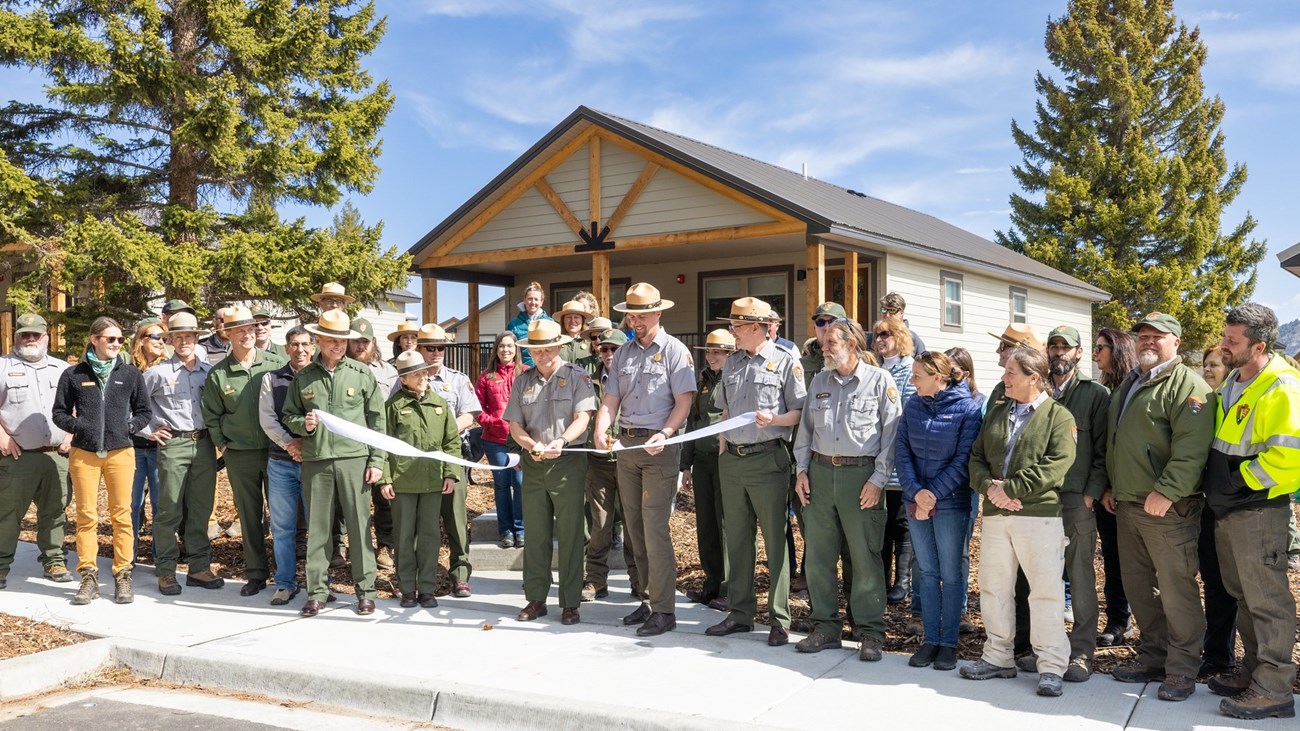
NPS / Jacob W. Frank Success in the Focusing on the Core strategic priority is central to Yellowstone’s future and revolves around improving the working and living conditions of the Yellowstone team, how the park manages its financial resources, and how the park works toward the most effective administrative and operating framework. Continuing efforts to make Yellowstone one of the best places to work in the country is critical, and the park is focused on improving recruitment and retention efforts, improving work-life balance, and ensuring that staffing levels are adequate to handle the demands of increasing park visitation. 
Supporting the Yellowstone TeamYellowstone’s workforce is one of the most capable, talented, and resilient in the country. Despite facing unprecedented challenges over the past three years, our team has continuously worked to successfully protect the park’s resources and keep the park open to millions of visitors annually. With support from Yellowstone Forever’s Resiliency Fund, the park developed the Yellowstone Resiliency Project in September 2022. This one-year pilot counseling program brought in several local, trauma-informed counselors who are familiar with NPS values and mission and trained to engage with employees after significant medical or law enforcement incidents. Yellowstone is a leader within the National Park Service on the formulation, innovation, and overall reach of this type of employee-focused program and is advising the regional leadership council subcommittee that is also working to address employee health and wellness. Informed by employee feedback, Yellowstone’s Senior Leadership Team created Yellowstone University in 2023, a parkwide effort to foster a thriving workforce through expanded professional development and training opportunities. The effort includes:
The Yellowstone Safety Services Office conducts safety briefings with divisional work groups, develops an Operational Leadership key points summary for distribution across the agency, and hosts several after-action reviews to create lessons learned products for distribution. In recent years, the Employee Safety and Wellness Team coordinated several projects, including Safety Days, health fairs, and the purchase of exercise fitness equipment for employees; served on Critical Incident Stress Management peer support groups; served on the park’s COVID-19 Incident Management Team; assisted with COVID-19 and implementation of protective equipment; and expanded the park Respiratory Protection Program. The Safety Office also prepares a draft safety action plan to improve safety performance across the park. Yellowstone has one of the largest vehicle fleets in the National Park Service. From snowmobiles, to snowplows, dump trucks, ambulances, and firetrucks, the garage provides vital support and maintenance to ensure Yellowstone’s team can operate effectively. The garage provides a wide spectrum of services ranging from basic oil changes to comprehensive engine rebuilds. The garage team completed 2,555 maintenance work orders in 2021-2022 and provided critical support to the park’s flood recovery response. Immediately following the flood, garage and fleet team members worked alongside the Special Projects crew to complete phase 1 of the Old Gardiner Road upgrade (currently the North Entrance Road), which provided access between park headquarters and Gardiner, Montana. They drove dump trucks, operated heavy equipment, ordered parts, and repaired broken equipment to keep this project moving at a rapid pace. During the winter, hundreds of employees, volunteers, and family members work and live in isolated conditions throughout the interior of the park with no postal service delivery. Yellowstone’s mail courier becomes the postal delivery mechanism for park employees. The courier travels 150 miles by oversnow vehicle two times per week delivering an estimated 17,000 pieces of mail and another 3,500 parcels to employees, volunteers, and family members each year. Yellowstone’s expert teams of carpenters, plumbers, and electricians handled 2,608 calls for service in 2021-2022. The craft shop teams work diligently to maintain facility operations, improve the condition of employee housing, improve visitor experience, and prioritize the repair of facilities and equipment that pose health and safety risks. The mailroom and copy center operations processed 42,808 pieces of incoming and outgoing mail in 2022 and serves as a critical support unit for park operations and programs. The center also completes document reproduction for all divisions, averaging over 1,200 print requests and tens of thousands of pages annually. The Supply Center stocks over 1,500 unique items of consumable and expendable stock, including office and janitorial supplies, hardware, tools, and safety products. The Yellowstone team also relies on the receiving warehouse for delivery of critical supplies, property, and materials needed to operate the park. Yellowstone’s warehouse operations provide a central repository and distribution center for employees’ personal packages as well as work-related shipments, processing well over 15,000 packages annually. In 2022, the warehouse team also managed over 12,400 property assets valued at $61,799,161. The Information Technology and Telecommunications Services maintains a highly complex network to support all forms of data and voice communication. The network supports 800 computers, 1,265 phone lines, 60 servers, 200 network routers and switches, and 100 terabytes of storage. In 2021, YCC hosted two crews of teens for five weeks and, in 2022, hosted two month-long sessions of three crews each, totaling 31 teens. The focus of this work-based education program is to support other work groups’ priority projects, including installation of more than 100 bear boxes annually, new trailhead signs at all 95 park trailheads, and trail portal signs on the Canyon Rims; collecting visitor use data at high-visitation locations; trail maintenance; and in 2022 assisted with park flood recovery efforts by clearing 3 miles of brush along the Old Gardiner Road and 300 yards of ditch and two wastewater retention ponds. The park maintains 18 water and wastewater treatment systems throughout the park. Water production decreased by 4% in 2022 to 260,265,431 gallons, down from 269,843,307 gallons in 2021. Wastewater increased 3% in 2022 to 148,216,448 gallons, up from 143,211,645 gallons in 2021. Park staff have identified and repaired water line leaks parkwide but continue to battle locating ongoing water system loss. A parkwide professional leak survey is planned for early summer 2023. Improving Telecommunications InfrastructureDiamond Communications continues to move forward with their application for a right-of-way and special use permit to build up to 190 miles of fiber along the South Entrance, Grand Loop, and North Entrance roads. Natural and cultural resource compliance is complete with a FONSI (Finding of No Significant Impact), interim drawings have been provided to the park, and an appraisal is being completed in coordination with the DOI Office of Land Valuation Services. If permitted, DC would recover their expenses over time by billing for services they provide to other service providers and in-park customers. If permits are issued, construction would take up to five years to complete. Yellowstone procured 10 Starlink Low-Earth-Orbit (LEO) business class satellite kits and matching routers to connect the Starlink services to the DOI network. The kits replaced obsolete and weak connections at Bechler, Lamar, Grant, Canyon, East Entrance, Northeast Entrance, Madison, Norris, Mammoth, Gardiner, Lake, and Tower. These services provide broadband DOI connections, support Voice Over Internet Protocol (VOIP) phones, and open internet connections to enable new traffic counters and cellular calling and data over Wi-Fi for government-issued mobile phones. LEO satellite internet services like Starlink are promising, but the costs per unit are prohibitive and there are limits to the number of services allowed in a geographic area. Verizon cellular improvements have enabled cellular-provided internet at many locations through hot spots and if the DC fiber project moves forward, cellular services will improve. Starting in 2021, fiber at South Entrance is now delivered directly to the nine residences as a utility. Verizon has improved their wireless services at Canyon, Old Faithful, Lake, Grant Village, and Mount Washburn. Many of these sites are delivering download speeds of 75 Mbps and more during peak visitation. Extended periods of service interruptions are still an issue due to a variety of environmental circumstances. Multiple areas of the park were upgraded to 100Mbps fiber connections provided by Anthem (West Yellowstone), Diamond Communications (South Entrance), Yellowstone Media Design (Stephens Creek), and Lumen (Gardiner, Heritage and Research Center, Old Faithful, and Lake). If the DC fiber optic network installation moves forward, antiquated communications infrastructure from mountaintops and backcountry sites can be removed. If the applicant wishes to withdraw, they can pay their cost recovery and withdraw without penalty. Improving Employee HousingYellowstone National Park has initiated a major, multimillion-dollar housing improvement effort that will substantially upgrade National Park Service employee housing across the park. The effort focuses on four goals: Goal 1: Replace outdated trailers with high-quality modular homes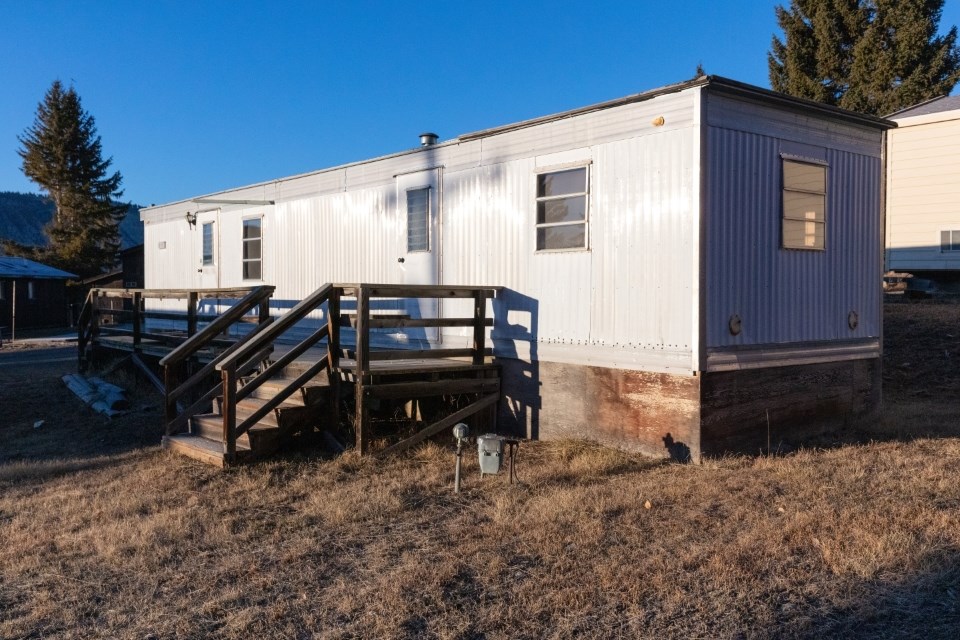
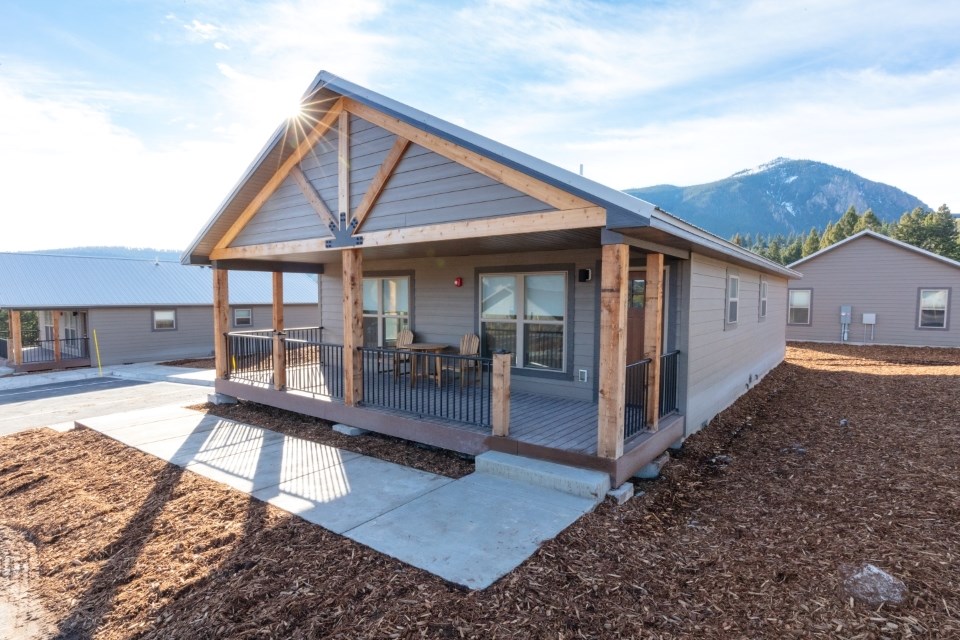
Left image
Right image
Yellowstone had 64 trailers, built between 1960-1983, that housed 80-100 employees annually. The condition of each trailer was extremely substandard and represented some of the worst employee housing in the national park system. Since 2019, the park has installed 45 high-quality modular cabins at Mammoth Hot Springs (32), Old Faithful (10), and Bechler (3). In 2023, an additional 21 units are scheduled to be placed at Lake Village (15) and West Yellowstone (6). By 2025, a remaining 15 cabins are scheduled to be placed at South Entrance (2), Grant Village (4), Madison (2), Norris (4), Canyon Village (3), and Northeast Entrance (2). All replacements will be in existing developed areas. Goal 2: Improve the condition of non-trailer and non-historic housing units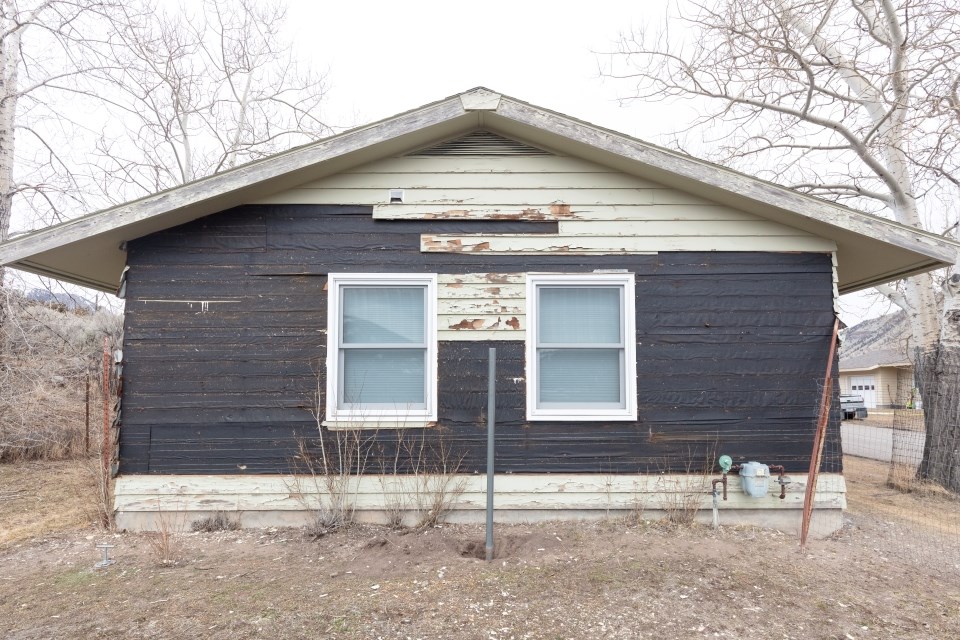
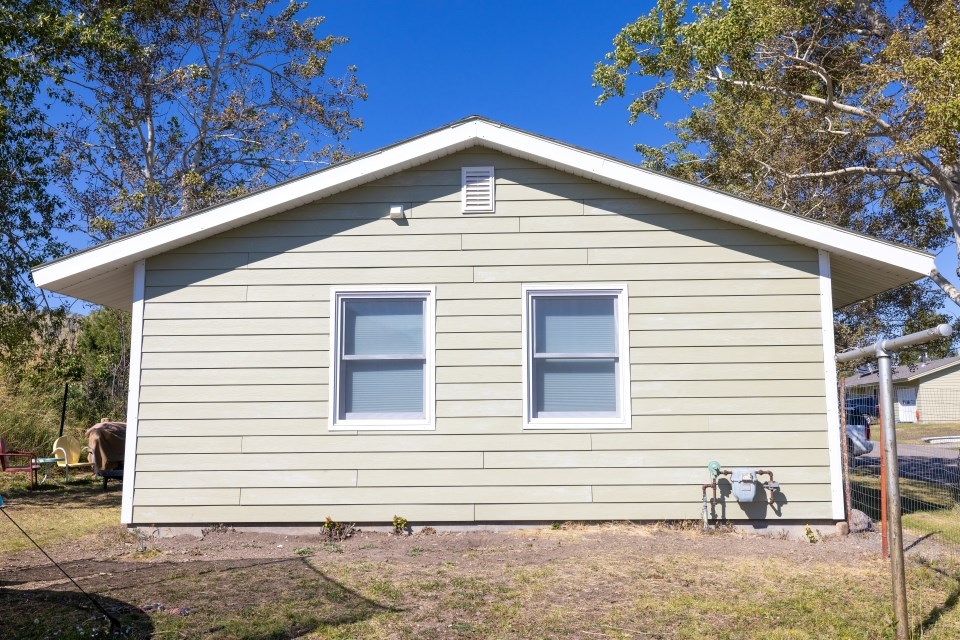
Left image
Right image
Yellowstone's non-trailer housing units are spread over nine developed areas. These housing units are the primary residences for NPS employees, many of whom are snowed in completely between December and April each year. The condition of these houses varies dramatically, with many in extremely poor condition and no improvements in decades. Goal 3: Rehabilitate deteriorating historic homes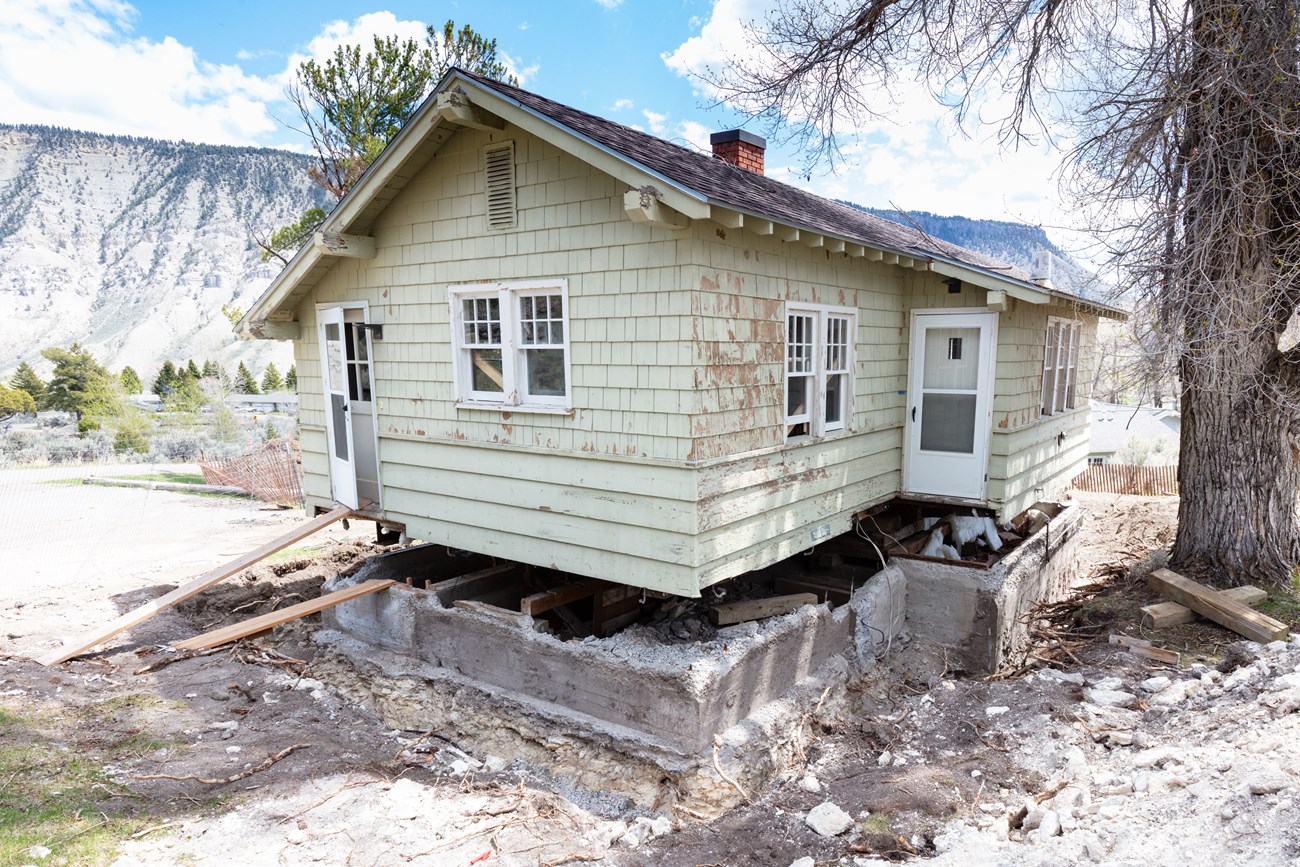
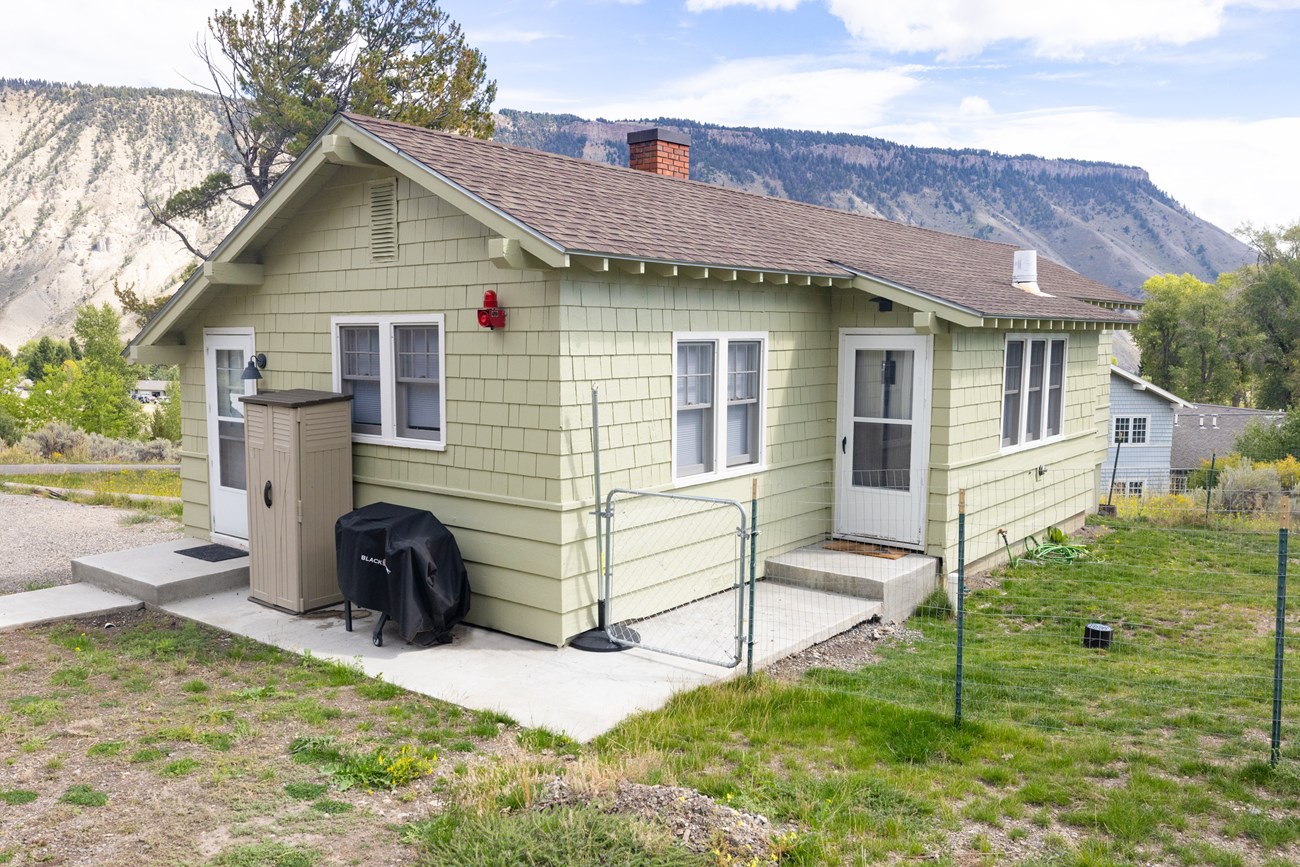
Left image
Right image
Designated as a National Historic Landmark in 2003, Fort Yellowstone consists of 34 structures constructed in the 1880's and early 1890's. Many of these structures continue to be used as housing and office space, but historic preservation is the primary reason for these rehabilitations. Many of these structures are severely deteriorating, and the park plans to improve the condition of these historic homes. Goal 4: Add new housing capacityOver the past decade, housing and rental prices in gateway communities have risen dramatically. Many communities have transitioned to short-term rental markets, making year-round rentals rare and very expensive. As increasing portions of the Yellowstone workforce retire, the lack of available housing in surrounding communities is substantially impacting workforce recruitment. Additionally, park visitation has increased 45% since 2000 and requires more staffing to manage park operations. For these reasons, the park is assessing the number of additional housing units that may be needed.
To address this need, natural and cultural resource compliance is underway to locate potential areas and configurations for new housing (single occupancy dorms, modular cabins, etc.). New housing units would only be placed in existing developed areas. The park also converted three 8-plex utility/storage areas into one-bedroom apartments. Additionally, the park is pursuing housing lease options in the gateway communities of Gardiner and West Yellowstone, Montana. More Information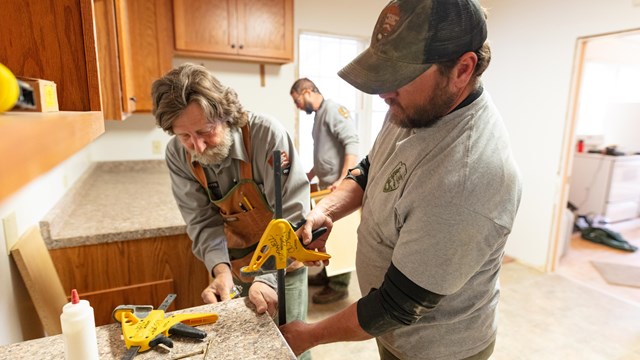
Work With Us
Search for jobs with the National Park Service or companies that operate in the park. 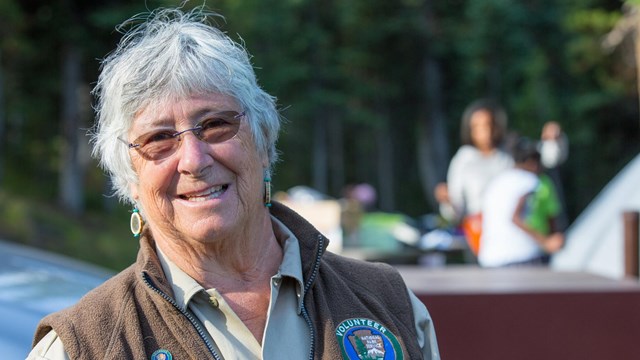
Volunteer
Learn how you might be able to volunteer in Yellowstone National Park. 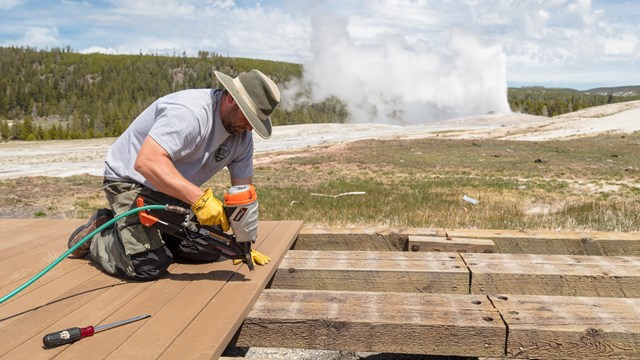
Explore Yellowstone Careers
Learn more about the wide variety of work employees accomplish and explore Yellowstone careers. Yellowstone "Core" NewsOther Strategic Priorities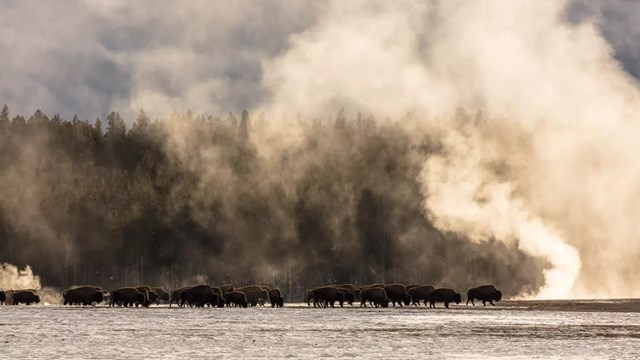
Strengthening Ecosystem & RESOURCES
Learn how Yellowstone is strengthening, preserving, and protecting the many natural, cultural, and geologic resources. 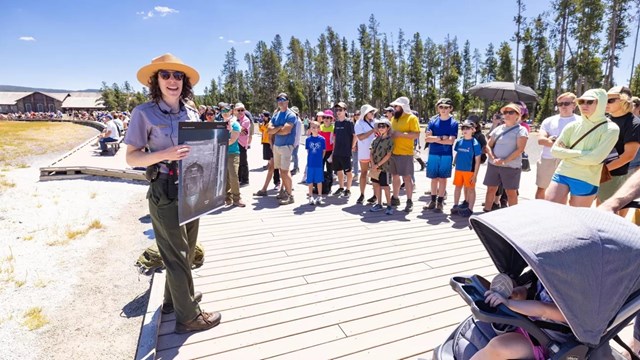
Delivering a World-Class EXPERIENCE
Learn how Yellowstone is providing a high-quality visitor experience for millions who visit yearly while ensuring resources are protected. 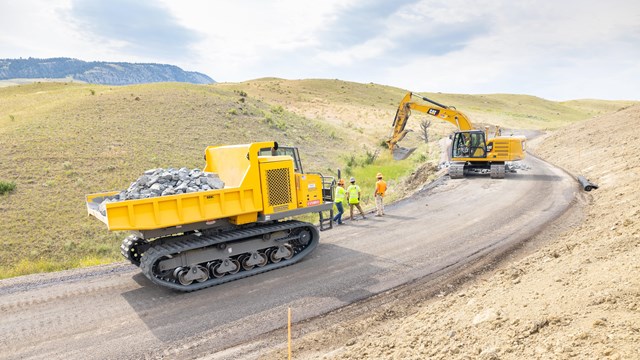
Investing in INFRASTRUCTURE
Learn how Yellowstone is addressing deferred maintenance, improving asset conditions, and protecting investments. 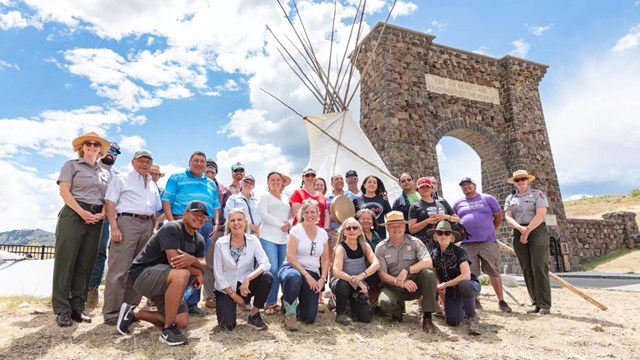
Building Coalitions & PARTNERSHIPS
Learn how Yellowstone is building and aligning priorities with many partners, including Tribes, elected officials, nonprofits, and more. |
Last updated: January 26, 2024
